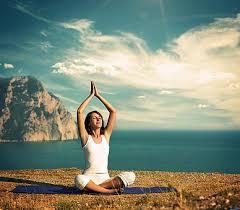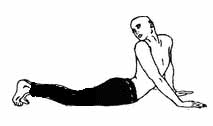communication
Yoga blocks and their superpowers
 The bricks are used to “raise the floor”, bring it closer to the student and thereby facilitate the presence in the asana.
The bricks are used to “raise the floor”, bring it closer to the student and thereby facilitate the presence in the asana.
And now more specifically: what gives the use of yoga blocks?
1. The correctness of the detuning
Often, when we really want to touch the floor, for example in Parshvottanasana (link), and the flexibility is not enough, we end up sacrificing safety and bend the back.
Ambitions-1, the right fulfilling asanas-0. Is it worth risking the lower back? Hardly.
Placing the blocks under the hands changes this situation: we get a stable support and carefully work out the asana without forcing events. Continue reading
Yoga practice in varicose veins
 What is varicose veins
What is varicose veins
Varicose disease is a common disease that manifests itself in the form of deformation of the venous vessels and disorders of the venous valves, which leads to a deterioration of venous outflow of blood.
With the development of varicose veins, the following consequences are possible
– changes in the structure of the vascular wall-its stretching, which often has irreversible consequences;
– change in the nature of blood flow-its slowdown or turbulence. When blood flow slows down, blood can thicken, which in turn can lead to blood clots;
– deterioration of metabolism in General and nutrition of organs and tissues in particular. Continue reading
The purpose of yoga. Ashtanga Yoga Patanjali (part 1)
 In order to achieve any goal, you need to clearly see this goal in front of you. Therefore, in order for the practice of yoga to be fruitful, you need to understand exactly what we expect from the practice, what the result should be. The sage Patanjali has long described the 8 steps of classical yoga. These steps are also called ashtanga yoga (Ashta translates as eight from Sanskrit). These steps are as follows: yama, niyama, asana, pranayama, pratyahara, dharana, dhyana and samadhi. That is, the ultimate goal of yoga is samadhi.
In order to achieve any goal, you need to clearly see this goal in front of you. Therefore, in order for the practice of yoga to be fruitful, you need to understand exactly what we expect from the practice, what the result should be. The sage Patanjali has long described the 8 steps of classical yoga. These steps are also called ashtanga yoga (Ashta translates as eight from Sanskrit). These steps are as follows: yama, niyama, asana, pranayama, pratyahara, dharana, dhyana and samadhi. That is, the ultimate goal of yoga is samadhi.
So what is samadhi? Samadhi is a state of direct comprehension of reality. This condition is also called enlightenment. Enlightenment from the word “light.” Light is what illuminates the darkness. So there must be darkness and light? What is this darkness and what is this light? Continue reading


